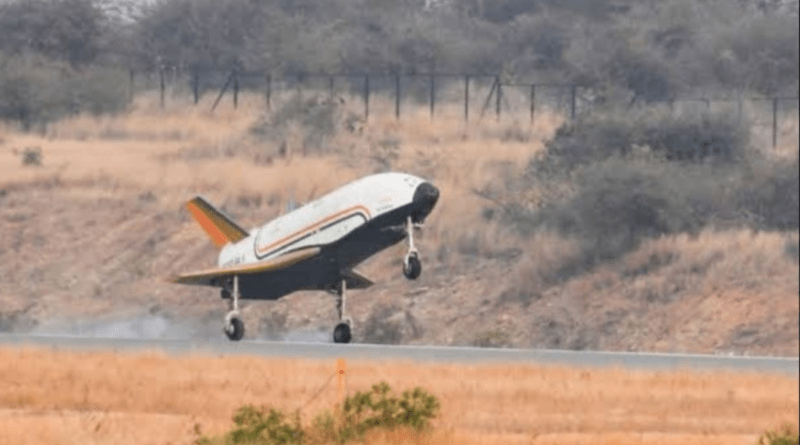This is the 21st century Pushpak Vimaan that has now been successfully launched by India.
Excellent and precise” were the test results, according to Indian Space Research Organization (ISRO) sources.
Pushpak, an SUV-sized winged rocket known as the “swadeshi space shuttle,” made a successful landing on a Karnataka runway this morning, signaling a significant advancement in the nation’s efforts to join the reusable rocket market.As part of the test, the rocket was dropped from an Air Force helicopter. S. Somanath, the head of the Indian Space Research Organization (ISRO), described the results as “excellent and precise.“ISRO consistently delivers! The space agency reported that Pushpak (RLV-TD), the winged vehicle, successfully made an autonomous runway landing after being released from an off-nominal position.
According to ISRO, the mission effectively replicated the approach and fast landing circumstances of a space-returning RLV.“An Indian Air Force Chinook chopper lifted the winged vehicle, known as Pushpak, and released it from a 4.5-kilometer altitude. Pushpak autonomously approached the runway after being released at a distance of 4 km, making cross-range corrections as it went.It made a crisp landing on the runway and used its nose wheel steering system, landing gear brakes, and braking parachute to bring itself to a stop, according to a statement from the aircraft.This was Pushpak’s third flight in an experiment designed to evaluate its robotic landing capability under more challenging conditions. It is anticipated that Pushpak’s operational deployment will take many more years.
Mr. Somanath had before declared, “India’s audacious attempt to make access to space most affordable is the Pushpak launch vehicle.The most costly component, the upper stage, which contains all the pricey electronics, is made reusable by returning it safely to Earth.
This is India’s futuristic reusable launch vehicle. Eventually, it might even be able to retrieve satellites from orbit for repair or refueling while they were in orbit. India aims to reduce space debris, and Pushpak is a step in that direction.
The Ramayana’s “Pushpak Viman,” who is regarded as the chariot of Kuber, the Lord of Wealth, is where the rocket gets its name.A committeed group of scientists and engineers started building the space shuttle ten years ago.
The 1.75-ton craft resembles a 6.5-meter airplane. Small thrusters assist the vehicle in navigating to the precise location of its landing during descent. Over ₹100 crore has been invested in the project by the government.




